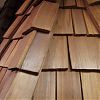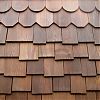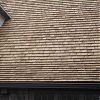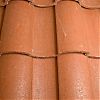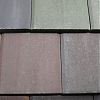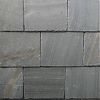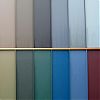“I would give your crew an A+. They worked really hard, finished the job quickly, and took great care not to harm any plants. The yard was spotless when they left too. Thanks!”
— P. & T. Welch
“We were pleased beyond our expectations with everyone’s professionalism & response to our questions, concerns & requests. Steve Campbell recommended your company to us & we will recommend you to others—your work was very thorough & tidy.”
— G. & S. Gorski
More from customers...
Steep Slope (4/12 & up)
Composition Shingles
Composition shingles are the most widely used roof covering material for roofs with slopes of 4/12 or more. Two basic styles of composition shingle are available – the 3-tab shingle or the laminated shingle which may also be referred to as architectural or dimensional shingles. The laminated shingle is designed to resemble the look of wood or slate. Both types consist of either an organic fiber mat or fiberglass core that is impregnated with asphalt then coated with mineral granules to add color and texture. An adhesive backing strip along with nails is the fastening method used. Limited warranties vary from 20 to 30 years for 3-tab shingles and 30 years to ‘lifetime’ for laminate & premium designer shingles.
Click on an image to enlarge the photo:
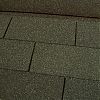
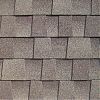
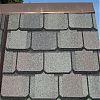
Wood gives a natural beauty to a building, a look many manufacturers try to imitate with simulated materials, usually without success. Wood shingles are cut to a specific size or die cut shape and smooth finished. Shakes are generally irregular and rough-textured, often hand-split on the exposed side and taper sawn on the other. Both types are available in a variety of lengths, widths and grades of wood. In the Pacific NW Western Red Cedar is the most common wood used to create shakes and shingles, but pine is also used. Two caveats exist with this type of roof covering. First, additional maintenance is needed to keep the wood clear of debris to prevent dry-rot and the second consideration is a lack of fire-resistance compared to other UL Class A fire rated options. Shingles and shakes can be treated to provide added life as well as fire resistance at an added cost.







 Material Links:
Material Links:
